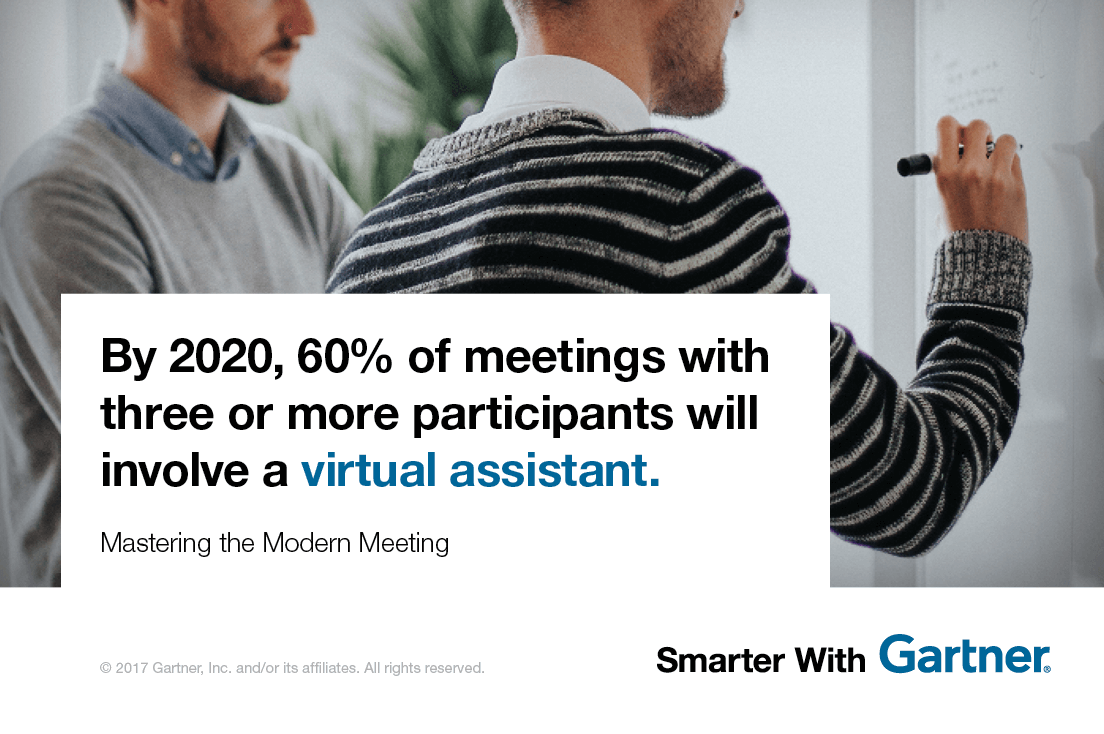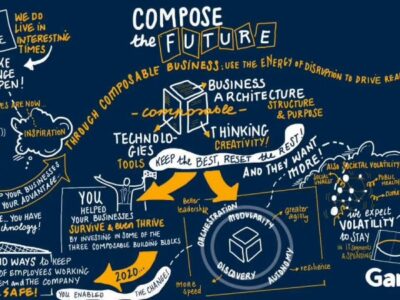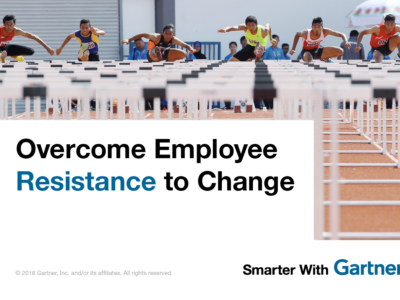Virtual assistants may hold the key to moving meetings from monotony to mastery.
Everyone loves to complain about meetings. Yet we keep accepting calendar requests for the same old meetings, in the same meeting room, with the same mediocre technology and the same disengaged people. They go on too long and end with the same vague outcomes and lack of accountability.
If you find yourself nodding along at this description, it’s time to rethink meetings for the digital workplace, says Adam Preset, research director at Gartner.
“Clients tell us that teams that are in sync dive right into meetings,” says Preset. “There’s less wasted time. They can start discussing complex issues or making critical decisions right away.”
“Gartner predicts that by 2020, 60% of meetings with three or more participants will involve a virtual assistant.”
Typically, there’s a disconnection between what we are doing before, during and after a meeting. The transition between meetings and other types of collaborative work creates too much friction, resulting in frustration and lost productivity.
People and process first
It’s a mistake to think throwing more technology at the problem will fix it, Preset says. Think first about good meeting habits like purpose, preparation, standards and etiquette.
Then, kill the status update meeting and find another way to keep teams on the same page, continuously and asynchronously. Use new digital workplace technologies such as workstream collaboration and automation tools that encompass the pre- during- and post-meeting phases.
The principles for good meeting practice remain just as important as meetings become less stand-alone events and more the milestones and checkpoints of a continuous flow of work.
Delegate to virtual assistants
The business case for the adoption of virtual assistants for meetings may not be obvious as the capability is only just emerging.
However, Gartner predicts that by 2020, 60% of meetings with three or more participants will involve a virtual assistant.
There are opportunities for virtual assistants to automate and influence steps in each of the three phases of standard meeting practice.
- Pre-meeting: Virtual assistants can decide when a meeting is necessary to resolve workflow issues, decide who should be at the meeting and synchronize the calendars of multiple meeting participants.
- In-meeting: Using natural-language processing and conversational AI, it is feasible for a virtual assistant to join a conference call and take notes, recommend relevant content to participants during the call, then capture and assign actions.
- Post-meeting: Meeting content could be not only recorded and transcribed but also indexed to become reusable structured business information. Virtual assistants may also be able to track follow-ups with reminders to participants and others who need to complete agreed actions.
These technologies are considered emerging and there are currently few tangible case studies, so start with trials and pilots in small group meetings in a receptive workgroup, and use the lessons learned to extend to a full division pilot project in the next 12 months.
“Be ready to incorporate virtual personal assistants and specialist products as you explore new meeting types and as your needs become more advanced,” advises Preset.
Gartner clients can read more in the report Contextualizing Virtual Assistants for More Effective Meetings in the Digital Workplace by Adam Preset, et al.
Get Smarter
Leadership in the Digital Age: A Gartner Trend Insight Report
The digital age poses new challenges and opportunities to CIOs and IT leaders. Both the rapid changes in technology and the unprecedented…
The Top 10 SaaS ERP Myths That Midmarket CIOs Need to Know
CIOs and ERP leaders in midsize organizations need to separate the myths of SaaS ERP, or cloud ERP more generally, from the reality….
Follow #GartnerCIO
Learn more at Gartner Symposium/ITxpo, the world’s most important gathering of CIOs and other senior IT executives.










